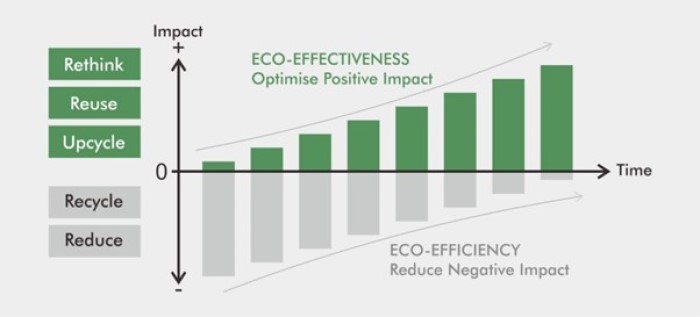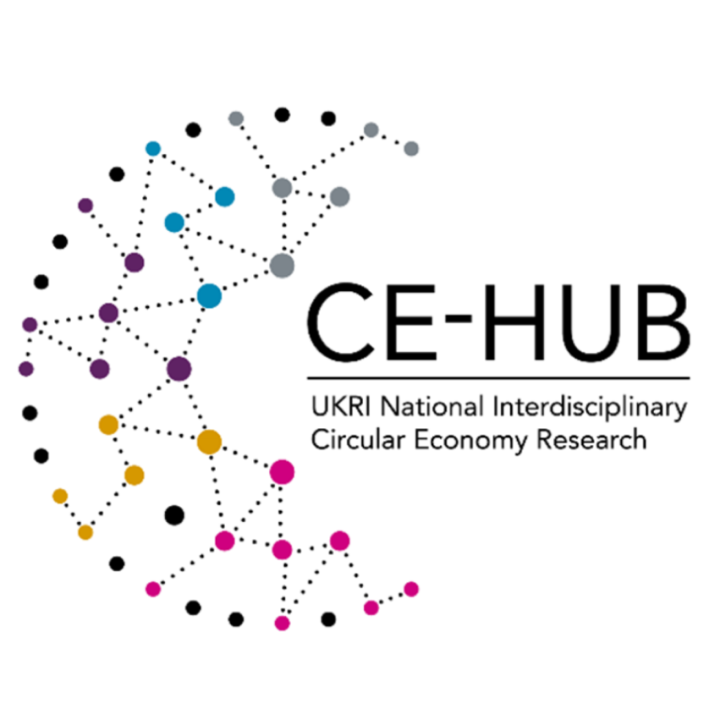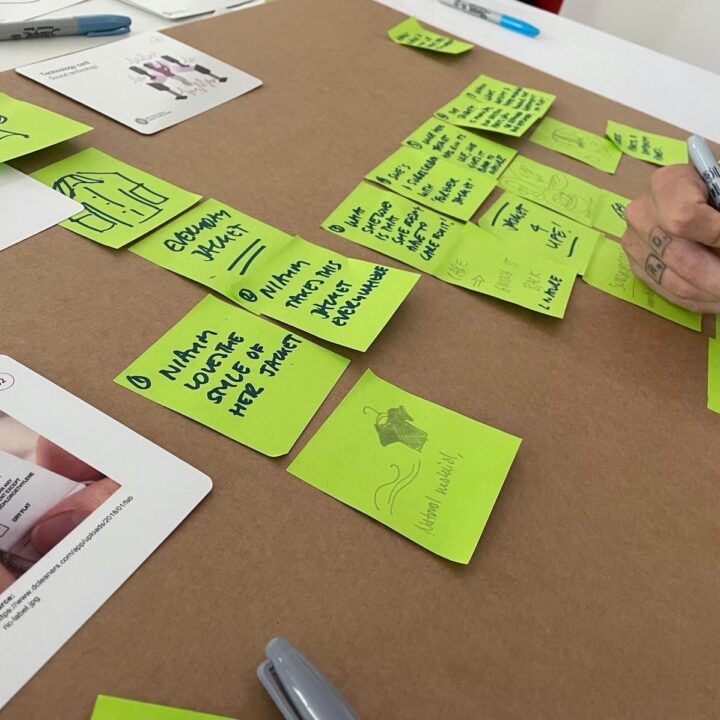2017, Reike, Vermeulen & Witjes
Demystifying Series: Introducing a circular economy
2022, CE-Hub Team
This is the introductory paper in a series aimed at demystifying and providing context to a circular economy. The series is aimed at an audience of businesspeople, policymakers and others who may already know something about circular economy, are interested in implementing it in their field of influence, and wish to know more. This Demystifying series addresses the ‘what’ of circular economy, and the upcoming What Works series will address the ‘how’.
Authors: Lucy Chamberlin & Georgie Hopkins
Reviewed by members of the Knowledge Hub Steering Group: Steve Evans, Simon Brown, Dan Dicker, Ali Moore, Isabelle Erixon, David Greenfield, Katie Lamb, Danielle Purkiss, Fiona Charnley.
Why do we need a circular economy now?
Human societies around the world are entering times of immense change and transition. The impacts of climate change, global pandemics, social and economic inequality and pollution are increasingly evident, and many of the natural systems that support human life (e.g. clean air, drinking water, healthy soil, biodiversity) have been pushed to their limits and are reaching crisis point[1]. In 2021 the UN announced ‘code red for humanity’[2].
Despite the many advantages of the Industrial Revolution for Britain and the Western World, the systems of production and consumption that emerged have had unintended outcomes. For example, around one third of all the food produced every year is wasted[3], many essential resources are being used up at an unsustainable rate,[4] and polluted soils, rivers, oceans and air are having devastating consequences on people’s health and wellbeing. In the current system, materials are taken from the environment, made into desirable and usable products, and then thrown away as waste when they are no longer needed. This system can be called a ‘linear economy’, as it is usually a one-way process (see Figure 2) in which products only have one life before being disposed of in landfill, incineration – or as direct pollutants in air, land and water. In a situation with finite resources and a growing population, this kind of system is not sustainable. As an example, in the UK, an average of 17 tonnes of material are used per person per year (the equivalent of 15 small family cars) and supporting this level of consumption for everyone in the world would require around three planets’ worth of resources.
More recently, economically developed economies have focused on recycling their waste streams, for example melting down plastic or metal items or pulping paper and cardboard in order to use them in the creation of new products. However, these recycling activities absorb a lot of energy, and also result in ‘downcycling’ of the material because a lot of its original properties (e.g. strength, flexibility, durability) are lost in the process. Although some part of the original item may be used in the creation of a new item, and it may have more than one life (see Figure 2), ultimately its destination will be the same as in a linear economy: the rubbish heap, landfill site, incinerator – or the environment.

What is a circular economy?
In contrast to a linear economy, a circular economy doesn’t just treat waste in a different way: it works to design a system from the outset in which waste doesn’t exist at all (see Figure 2). This might be by making sure the outputs of one process can become the inputs for another, or it might be by eliminating problematic (e.g. toxic) substances from the system altogether. It takes into account the impacts of the materials and processes on environmental and human health and is powered by renewable energy.
Instead of wasting materials, a circular economy aims to preserve and rebuild stocks of man-made and natural resources, reduce overall consumption, create more jobs and promote a different type of growth, where waste and pollution is designed out from the beginning. Ultimately, a circular economy is an innovation framework and set of strategies to help rethink and revaluate the value of resources, materials and products across the world.
Three core principles of a circular economy can be summed up as:
- Design out waste & pollution
- Keep products & materials in use
- Regenerate natural systems.
In a circular economy, therefore, the human-made or industrialised world would be designed to restore and regenerate, rather than exploit, the ecological systems that support it. Rather than accepting that things become waste soon after use (with associated negative consequences for people and planet), products, businesses and infrastructures would be designed differently so that most so-called ‘waste’ was eliminated. Things would be made to last and to be repaired or remanufactured and reused, substances toxic to health would be eliminated. The outputs or ‘wastes’ of one activity or material would become the inputs or feedstock for another. This may sound utopian, but there is an increasing amount of research that shows what it means for different material streams, products, services, people and organisations and how it could work.

Instead of ‘take – make – waste’, in a circular economy, businesses would make products that are designed to last and be used for a long time, either by the first owner or by being passed on and reused by many owners in turn. Products would also be returned to the retailer or manufacturer to be repaired, remanufactured or refurbished, before being sold again. In some instances, products would not be sold at all but rather leased out by the business to many customers in turn. In this way, not only would the quantities of waste at the end of the process be reduced, but the quantities of materials required for making new products would also be reduced. The energy needed to fuel these processes would come from renewable sources, and toxic inputs and residues would be prevented from harming human and ecosystem health.
What makes circular economy different?
Although a circular economy represents one way to think about sustainability, it also signifies quite a different approach. Whereas some concepts of sustainability are about efficiency, doing more with less and merely reducing the negative impacts of human activity, a circular economy is about focusing on the effectiveness of the system as a whole, and finding ways for human activities to work in harmony with ecosystems and the rest of the natural world (see Figure 4).

An ‘eco-efficient’ scenario, for example, might reduce the amount of plastic used to make water bottles, or increase their recycled content, but an ‘eco-effective’ or circular economy scenario, might completely rethink the need for water bottles altogether. Instead, the focus might be on how to provide accessible drinking water for all, or on reusable cups or containers, and the elimination of plastic bottle wastes and residues as a result.
How the CE-Hub frames the Circular Economy
There are many definitions, framing and proposed approaches to implement CE with varying ideas about overall goals and measures of success or effectiveness. From our experiences, there is also considerable shared ground amongst different perspectives, including the five National CE Centres (CECs). In this first year we have adopted and applied a framing that has been found to be useful and successful in working with a diverse range of stakeholders. The essential features of this framing are as follows:
Working definition: A CE is an economy that is regenerative and restorative by design in contrast to a take-make-waste linear economy that is extractive and degenerative by design.
Goal: A guiding goal for a CE is to decouple economic growth from resource consumption. This should be an absolute decoupling reducing the material footprint and resource throughput from a defined baseline with a target to operate within planetary boundaries.
Principles: A short list of guiding principles include:
- Design out waste at the outset, every material choice and designed component or product should be a material, component or product for something else (by default, this includes eliminating hazardous materials and adopting safer by design principles),
- Maintain and optimise materials, products and components at their highest level for the longest time period subject to technical innovation and overall resource productivity and environmental impacts,
- Shift to renewable energy subject to meeting principles 1 and 2,
- Rebuild and regenerate natural and social capital,
- Think and design in systems.
Value drivers: The primary source of value creation in a circular economy derives from four primary drivers originally conceptualised by the Ellen MacArthur Foundation:
- maintaining asset value (including natural capital),
- intensifying and prolonging material, product and component utilisation (e.g. repair, refurbishment, remanufacture),
- cascading of assets (biological and technical materials, components and products) across value chains (e.g.reuse, industrial symbiosis) or safely back into the biosphere,
- the optimisation of resources (e.g. avoiding contamination from hazardous and toxic materials).
These goals, principles and value drivers are alluringly simple. A key aim of NICER and the CE-Hub is to demonstrate how this works in practice and to improve the evidence base to show what works and what doesn’t, and the art of the possible in different contexts.
Further reading
- The concept of a circular economy has been influenced by other related fields and concepts, and it is important to acknowledge the role that these have played in its emergence. For example, Industrial Ecology[6], the Performance Economy[7], Biomimicry[8], Cradle to Cradle[9] Design, Industrial Symbiosis[10], resource efficiency and regenerative systems.
- The Ellen MacArthur Foundation has more information as well as a lot of examples and resources about circular economy on its website.
- The governments of the UK have set out their intentions to move towards a circular economy and how they will implement the Circular Economy Package.
- The EU also has a circular economy action plan, and in 2021 there was the first meeting of the Global Alliance on Circular Economy and Resource Efficiency, a collaboration between the EU, United Nations Environment Programme and United Nations Industrial Development Organisation, and hosted by the World Circular Economy Forum.
References
[1] https://www.stockholmresilience.org/research/planetary-boundaries/the-nine-planetary-boundaries.html
[2] https://news.un.org/en/story/2021/08/1097362
[3] E.g. https://www.unep.org/thinkeatsave/get-informed/worldwide-food-waste
[4] https://www.unep.org/news-and-stories/story/were-gobbling-earths-resources-unsustainable-rate
[5]https://www.researchgate.net/profile/Martin_Geissdoerfer2/publication/343810965_Circular_business_models_A_review/links/5f628dd092851c07896d7dd3/Circular-business-models-A-review.pdf
[6] https://www.sciencedirect.com/topics/earth-and-planetary-sciences/industrial-ecology
[7] Stahel, 2006, ‘The Performance Economy’
[8] Benyus, 1997, ‘Biomimicry’
[9] Braungart & McDonough, 2002, ‘Cradle to Cradle’
[10] Chertow, 2000, https://doi.org/10.1146/annurev.energy.25.1.313

Demystifying Series: introducing a circular economy
Share this article in downloadable PDF form
Download PDF >>





